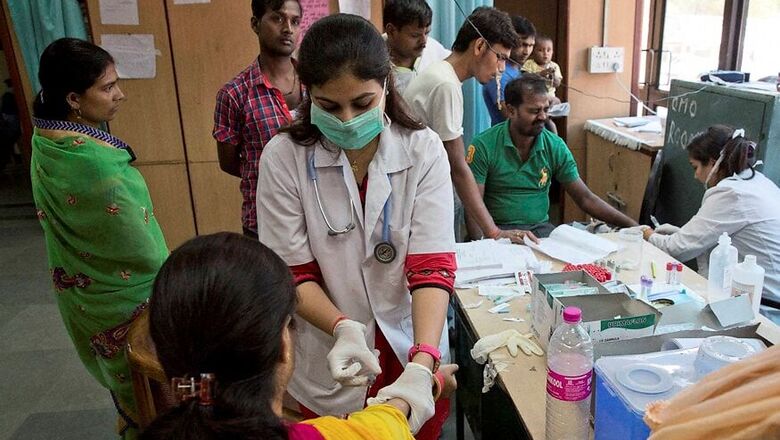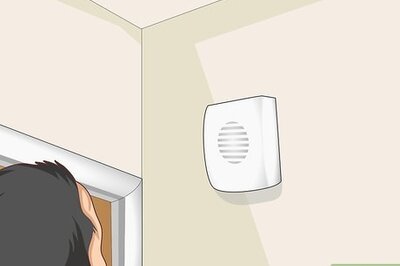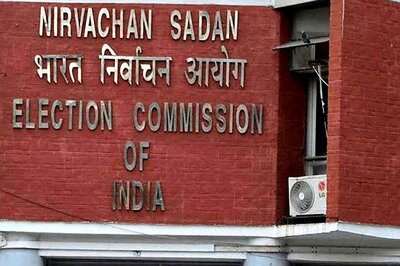
views
New Delhi: Private hospitals in Delhi/NCR routinely prescribe expensive branded drugs instead of the price-controlled ones and also earn profits up to 1737 percent on drugs, consumables and diagnosis, the national pharma price control authority revealed on Tuesday.
The National Pharmaceutical Pricing Authority of India (NPPA) has analysed billing patterns of four private hospitals in the Delhi/NCR to find that drugs under the National List of Essential Medicines (NLEM) or scheduled drugs constitute only 4.10 percent of the billing amounts while expensive non-scheduled drugs that have no price caps make up for 25.67 percent of the total billing amounts.
Also, consumables earn these hospitals the highest profit margin of a staggering 1737 percent. For example, the three way stop cock bi-valve that the hospitals purchase for Rs 5.77, have a printed MRP of Rs 106. The profit margin on consumables range between 344 percent and 1737 percent. On non-scheduled drugs, it ranges between 158 percent and 1192 percent. On non-scheduled medical devices such as cannulas and catheters, it can be anything between 371 percent and 1272 percent.
The NPPA has further said that it is “amply clear” that doctors at the private hospitals — that are being examined by the price control body — prefer “non-scheduled branded medicines” over the scheduled ones for higher margins.
Drug makers, too, launch ‘new drug’ and ‘fixed dose combination’ variants of medicines under the NLEM to escape the price cap and thus are able to hike the MRP by 10 percent (annually).
Since the ‘essential medicine list’ has very specific proportions and forms of the drugs -- whether it is a tablet or a syrup -- slight variations in the constitution allow manufacturers to skip the list altogether.
The findings come in the wake of several complaints being raised against private hospitals in Delhi/NCR for billing dengue patients with staggering amounts. Four private hospitals in the region came under heavy criticism in the past few months.
In December, parents of a 7-year-old dengue patient were billed Rs 16 lakh for a 15-day stay by a private hospital in Gurugram while the girl had died at the end of the stay.
While one of these four hospitals made its billing data public, the other three asked NPPA not to reveal their names and submitted their data to the authority. Drugs, devices and diagnostics make up for 46 percent of the total bill amount analysed by the NPPA.
Going by the billing patterns of these private hospitals, consumables like surgical masks and gloves, etc constitute about 9.56 percent of the total amount, almost double the cost of the scheduled drugs.
Diagnostic services make up for 15.56 percent of the total amount. Room rents and procedure costs come to 11.61 percent and 11.42 percent, respectively, while consultations and medical supervision constitute 12.72 percent of the total amount.
Since most private hospitals run in-house pharmacies, they purchase drugs, devices and disposables in bulk. This makes it easier for hospitals to earn “very high profit margins” and indulge in “profiteering on drugs and devices even without the need to violate the MRPs, which is already enough inflated”, said the NPPA order.
It added that the industry, “in order to get bulk supply orders is ... ‘forced’ to print higher MRPs as per the market requirements”. The patient pays for these inflated costs, thus incurring a high out-of-pocket expenditure.
At the end of it, beneficiaries of the inflated MRPs are hospitals not the drugs and devices manufacturers, NPPA observed.
Even scheduled drug formulations saw a mark-up by the hospitals between 116 percent and 357 percent. This is in clear violation of the Drugs (Prices Control) Order, 2013 that permits only a mark-up of 16 percent.
“This is a clear case of market distortion where manufacturers, after accounting for their profits, print inflated MRPs to meet the demands of a distorted trade channel without getting any benefits from this ‘artificial inflation’ while patients have to incur huge out-of-pocket expenditure in hospitalization cases,” said the NPPA order.
The NPPA also found that the diagnostics costs it analysed were “invariably” higher than in other independently-run private centre. However, since diagnosis is beyond the purview of the NPPA, it cannot regulate these costs. They have to be monitored and regulated by states under the Clinical Establishments Acts, 2010, which Delhi has not legislated yet.




















Comments
0 comment